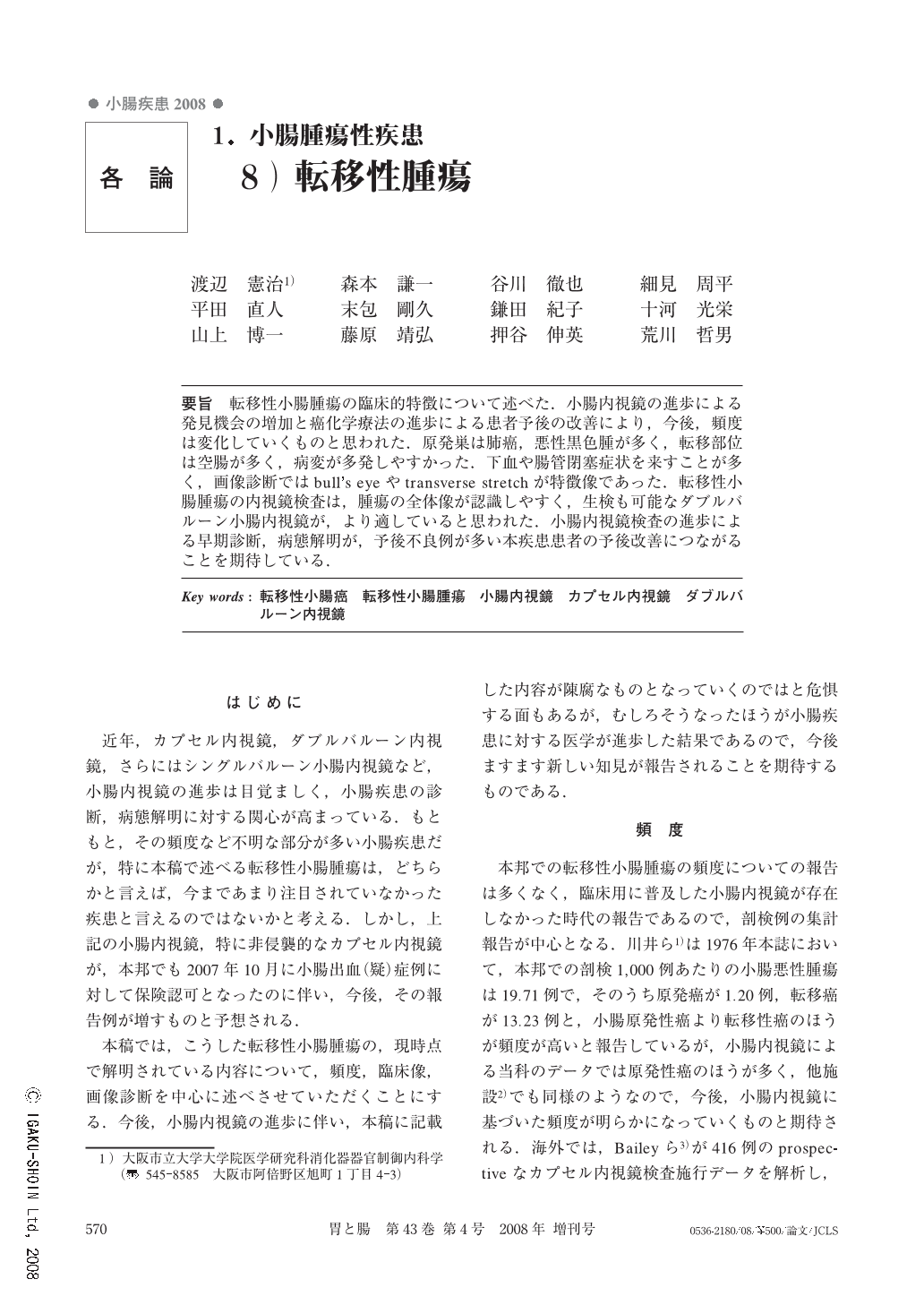Japanese
English
- 有料閲覧
- Abstract 文献概要
- 1ページ目 Look Inside
- 参考文献 Reference
- サイト内被引用 Cited by
要旨 転移性小腸腫瘍の臨床的特徴について述べた.小腸内視鏡の進歩による発見機会の増加と癌化学療法の進歩による患者予後の改善により,今後,頻度は変化していくものと思われた.原発巣は肺癌,悪性黒色腫が多く,転移部位は空腸が多く,病変が多発しやすかった.下血や腸管閉塞症状を来すことが多く,画像診断ではbull's eyeやtransverse stretchが特徴像であった.転移性小腸腫瘍の内視鏡検査は,腫瘍の全体像が認識しやすく,生検も可能なダブルバルーン小腸内視鏡が,より適していると思われた.小腸内視鏡検査の進歩による早期診断,病態解明が,予後不良例が多い本疾患患者の予後改善につながることを期待している.
It seems possible to change the frequency of metastatic small intestinal tumors by increasing the use of examination by capsule endoscopy or double balloon enteroscopy and the development of chemotherapy. Most common primary lesions were lung cancer and malignant melanoma. The most common site of metastasis in the small intestine is the jejunum, and there is a tendency for this to multiply. The most common clinical symptom was melena or ileus. Typical findings of small bowel radiography were"bull's eye"or"transverse stretch". It is better to perform double balloon enteroscopy for patients with metastatic small intestinal tumors than capsule endoscopy, because double balloon enteroscopy makes it easy to see the whole lesion and enables the taking of biopsy specimens. We hope to improve the prognosis of patients by early diagnosis or clarification of the pathology of small intestinal tumors by using capsule endoscopy or double balloon enteroscopy.

Copyright © 2008, Igaku-Shoin Ltd. All rights reserved.


